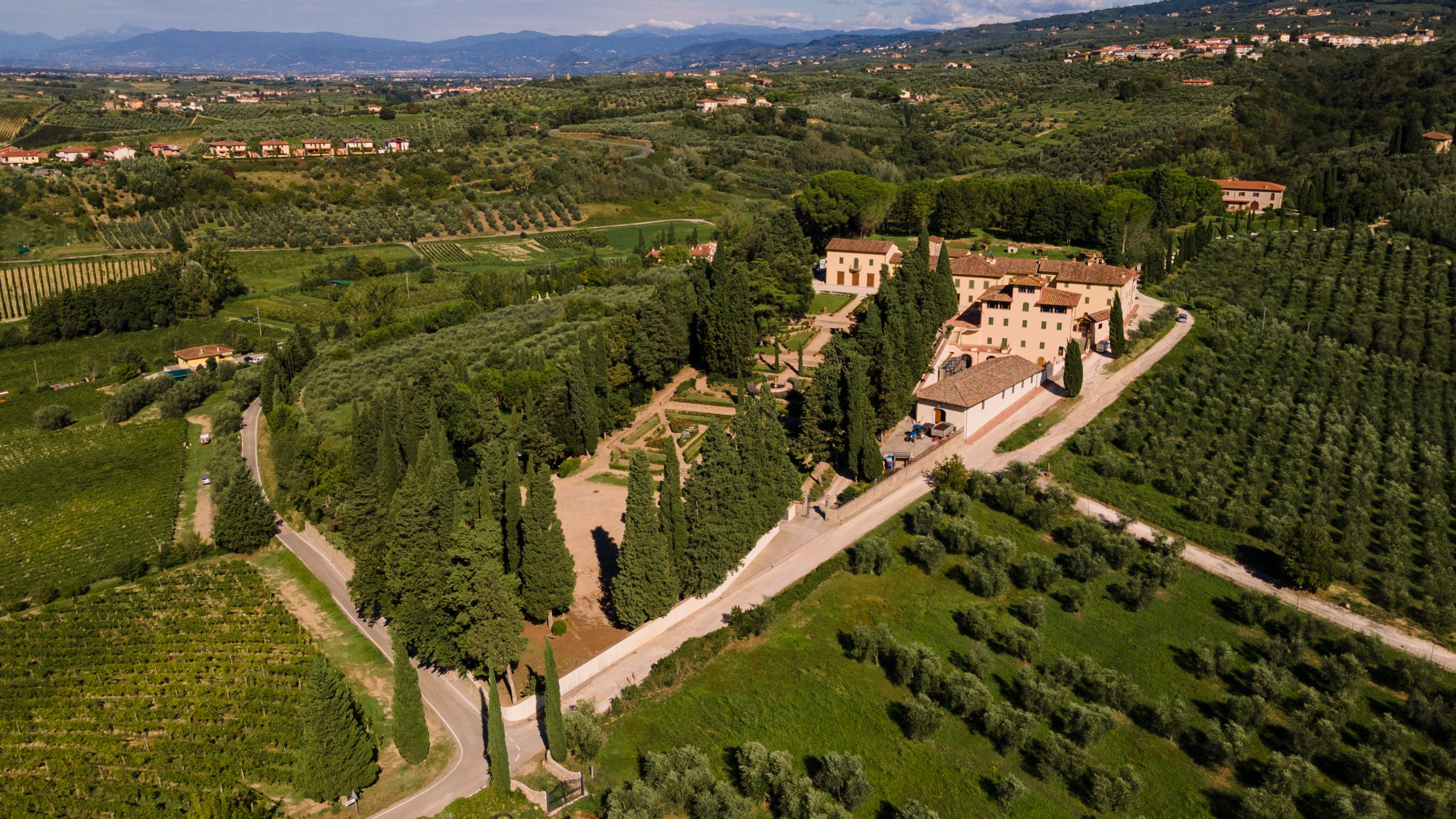Why should young people invest in wine?
By Louis ThomasWhile many Gen Zs and Millennials are reportedly shunning drinking alcohol altogether, there are those who see wine as a worthy investment opportunity – and there are also businesses trying to capitalise on this.

WineFi is part-owned by Coterie Holdings, the Michael Saunders-led wine business holding company which made something of a splash with its foundation last autumn.
“We were introduced to the team at Coterie very early in our development, and both sides recognised there was a mutual fit,” explains WineFi CEO Callum Woodcock, who has a background in asset management. “From our perspective, there’s a huge benefit to being part of an ecosystem. We can store with Coterie Vaults, we can source and broker wine through Lay & Wheeler and Coterie’s other merchants, and even offer certain clients the ability to borrow against the value of their portfolios with Jera.”
“The relationship also lends WineFi a lot of credibility,” suggests Woodcock. “I am very grateful to be working with some of the ‘big beasts’ within the wine trade, as well as some really trusted brands, and I think that has made a lot of people sit up and take notice of what we are doing.”
Why?
The people that WineFi seems to really want to take notice are younger people – those who do not necessarily fit the stereotype of fine wine investors.
However, Woodcock suggests that it is a case of the early bird catching the worm: “If you are investing in wine for anticipated financial gain, rather than simply collecting it, I think the most solid argument for investing young is the time horizon. Wine is a medium-long term investment, with a holding period of anywhere from five-to-seven years. Investing young, especially if you plan on keeping wine as a static percentage of a wider portfolio, allows you to realise liquidity on a rolling basis. This might not necessarily be the case for someone later in life.”
Wine’s other asset as an investment for young people, according to Woodcock, is that it gives something “interesting” for them to talk about: “You can talk about it at a dinner party in a way that you can’t talk about your S&P 500 index fund!”
Appealing to a younger cohort also necessitates changing tack, particularly from a communication perspective. A survey from earlier this year found that almost a quarter (23%) of 18-34-year-olds ‘never’ pick up phone calls, and 61% prefer to receive a message rather than an audio call.
“It is as alien to younger people to have to call up your wine broker to add to your wine portfolio as it is to call up your stock broker to add to your equity portfolio. They expect to be able to self-serve, seamlessly and cost-effectively, on investment opportunities,” says operations director Oliver Thorpe, who adds that younger people “want to be able to align with a brand on a much more personal level”.
“They like to know that the company they’re working with has values that mirror their own, and they want to be able to put a face to a brand. Big corps have cottoned onto this too, which is why you can see them on X sharing memes under popular posts. We’ve found that sharing our journey, and being open about who we are, what we do, and why we do it also resonates,” says Thorpe.
Social media’s role raises questions about whether trends such as Non-Fungible Tokens (NFTs) and Cryptocurrency, concepts which naturally appeal to a more tech savvy younger generation, might play a role in encouraging them to invest in fine wine. Blockchain may still yet revolutionise the trade according to some, and Woodcock is not against it: “Through an investor’s lens, tokenisation allows for portfolios of wine to be fractionalised. Not only does this lower the financial barrier to entry, but it also allows for those tokens to be traded on the secondary market – ‘on chain’.”
“This gives sellers access to a very large liquidity pool, essentially the entire crypto market,” he continues. “The issue is that regulation has not yet caught up with technology, so I think it will be a few years before we see anything like this. When we do though, I promise it will be WineFi doing it.”
Who?
Describing the demography of the average WineFi investor, Thorpe sums them up as “working-age, financially savvy professionals who already have an investment portfolio, and want to diversify further into alternative assets. They are lawyers, bankers, salespeople, consultants, founders, etc. – so a fairly elite group.”
Partner Content
What this suggests is that those going into wine investment aren’t necessarily people who are particularly interested in wine (after all, Gen Z is reportedly increasingly abstemious), but rather they are interested in making money.
James Kowsun, managing director of fine wine merchant Lay & Wheeler, which is also part of Coterie Holdings, summarises these sorts of people as “HENRYs”: “High earners, not rich yet – in recent years we haven’t seen that conversion of young people into wine drinkers, so we have some work to do.”
“Traditionally, to get into wine investment you’d start as a drinker, and then you’d buy some bottles to invest in,” says Woodcock. “What we’re seeing is the opposite: you start as an investor, and then, because it’s the most interesting part of your portfolio, you start to drink it. That’s how I got into wine!”
Thorpe reveals that while the majority are based in the UK (where profits from wine investment are exempt from capital gains tax), there are investors in around 16 countries in total, including Singapore, Hong Kong and the US.
“The average age of an investor on our platform was 36 for a long time, but has recently started to rise as we become more universal. Our investor base is mostly male, but an increasing percentage is female. We’re working on that,” he says.
What?
The multimillion pound question, and the one that many a fine wine producer concerned for their long term future may well be preoccupied by, is what are these younger people actually investing in?
Well, perhaps surprisingly, it doesn’t seem that there actually too many surprises when it comes to which regions are receiving interest from the youth of today.
“Of the more traditional investment regions the likes of Champagne, Tuscany and Burgundy definitely appeal to the younger generations,” shares WineFi head of data Aaran Daniel, pointing to Champagne’s “unique place in popular culture”, and Burgundy’s “scarcity” and “mystique”: “Not to mention, its returns over the last 20 years are hard to ignore!”
“Burgundy and Champagne have been cooling down after the madness in the wake of Covid, but there are definitely signs suggesting that wine labels are returning to their long term trend prices,” notes Daniel. “Some good deals are to be found now in these regions – quality and interest in these wines is as strong as ever.”
“In a recovering wine market though it is hard to overlook Tuscany and Italy as a whole,” Daniel shares. “Piedmont and Tuscany have shown remarkably consistent price appreciation over the last 20 years and they continue to release excellent vintages. Our analytics on Italy show a healthy balance with growing secondary activity and we have every reason to think that will continue.”
“On the lower end of the price spectrum, the younger generation definitely look towards the likes of Argentina, Rioja and South Africa for a more affordable price point. Especially those investors that take more of a ‘drink some, invest some’ approach. In Argentina you can buy 100 point vintage for a fraction of the price, theres an increasing secondary market for these wines and there’s no reason that trend won’t continue,” he adds, sharing that the “left field” picks of Argentina and South Africa are nations that WineFi is feeling particularly “bullish” about.
Whether young investors are enough to rescue the fine wine market from the doldrums it is currently in is another matter altogether. db recently asked whether it has finally reached the bottom.
Related news
Libiamo! Christie's curates wine auction for Royal Opera House
Camartina: 'a gem of a Super-Tuscan'
Birth of Cabernet: fine wine tells ‘the coolest story nobody knows’




